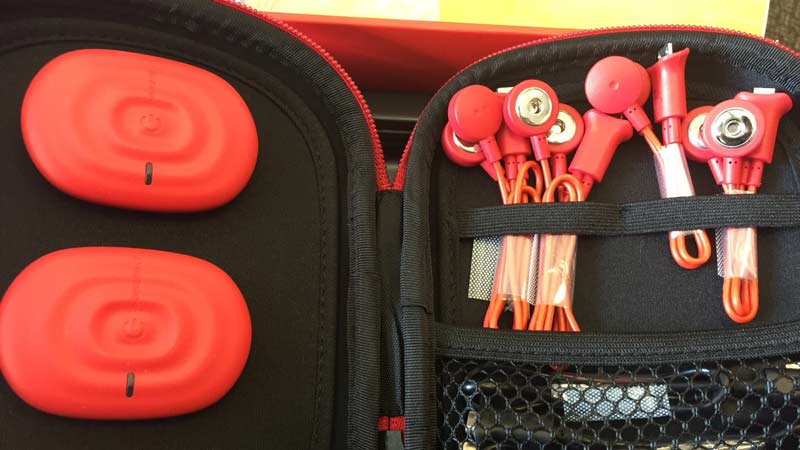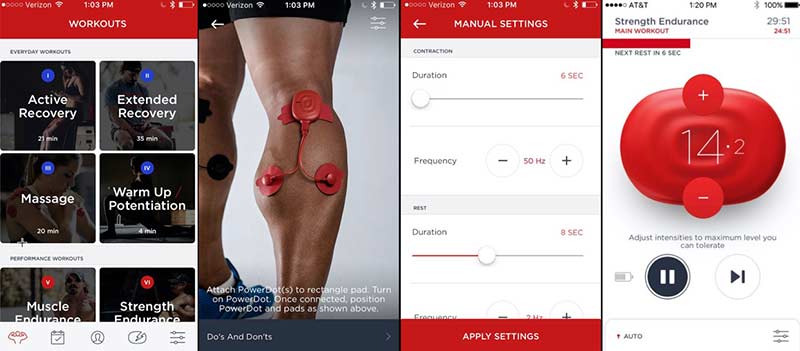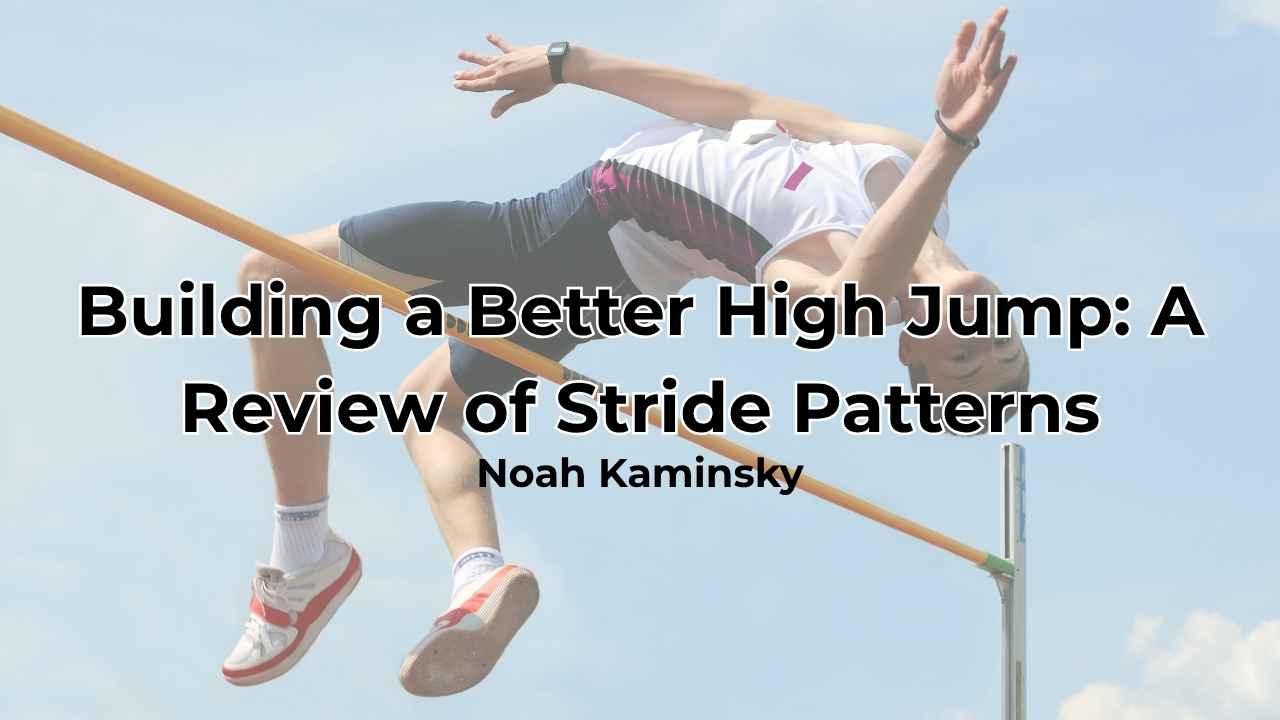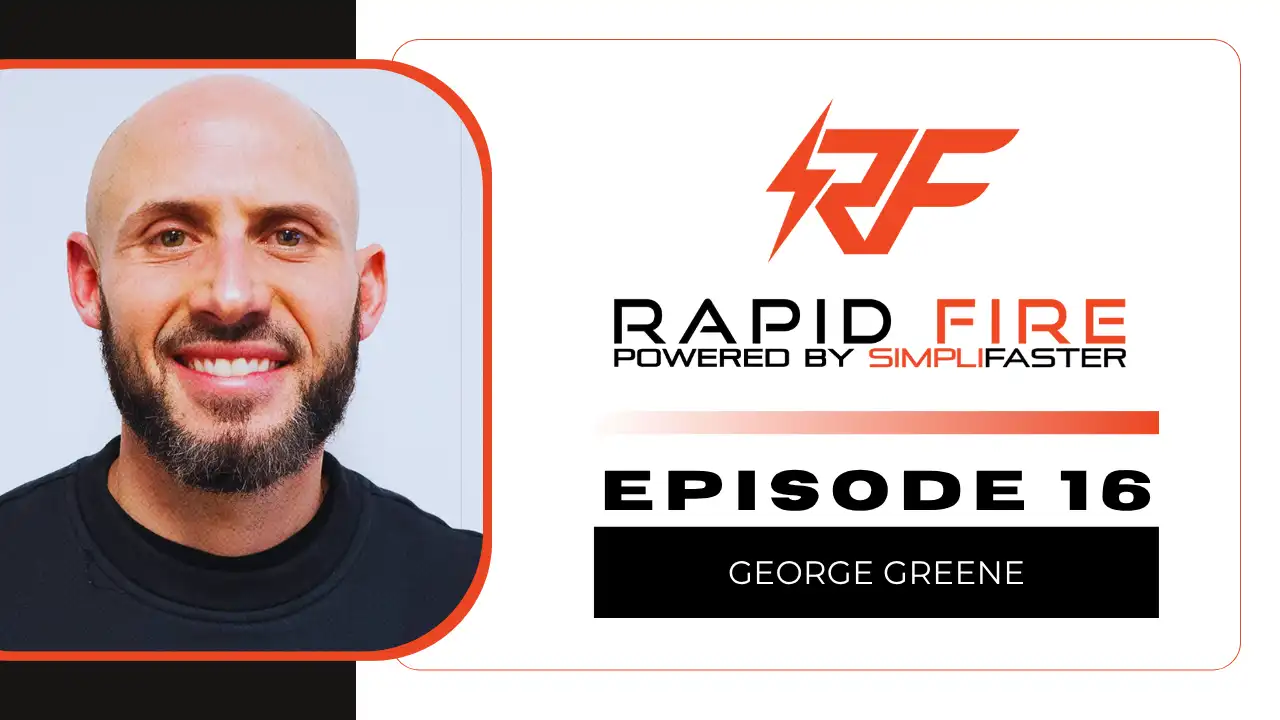[mashshare]

The strain that traveling puts on the body, especially on long commercial flights, is a variable that can create a competitive advantage if you apply interventions properly. I have struggled with travel myself, even after upgrading to first class and preparing myself ahead of time with sleep, diet, and exercise modifications.
In this article, I remind you what electrical muscle stimulation (EMS) can do for athletes in general, and specifically how it can benefit athletes when they’re traveling. I will also break down the reasons I am a fan of the PowerDot and what I see as the future of electrical muscle stimulators in sport. I have had athletes use electrical muscle stimulators for years, and there is now an opportunity for new options beyond the common EMS units that we have seen so far.
Understanding Active, Passive, and Facilitated Support
We pass the word “recovery” around a little too easily, and I have made the mistake of separating the two modalities into the wrong categories for years. Most people see recovery techniques—such as sauna, massage, EMS, and other options—as passive techniques. On the other hand, we see low-intensity exercise options being used as recovery workouts and, while technically they are, physiologically they are not accelerating the rate of regeneration.
The mistake I made is not a syntax error, but an oversimplification of adaption and training theory. Recovery runs and tempo running after heavy training are still workouts, but they allow for recovery of the intensive strain on the body while still conditioning. Therefore, on paper they’re a recovery workout because there’s less load, not because they speed up the repair more than just simple resting does.
A better approach is to look at loading and physiological responses, and just support all inputs properly into training. Certain exercise programs cause unique strains and responses. Therefore, a move towards a higher degree of specificity can help coaches make simpler interventions or applications.
Based on anatomy and deep circulatory changes, EMS can help when active options aren’t available. Share on XThe body of research on blood flow with regular subjects or athletes post-training with EMS is not a game changer, but a difference exists between what is effective in a chair or sitting on a plane and actual training. Based on anatomy and the study of deep circulatory changes, EMS can help when other options are simply not available. One of the areas we can learn from—but must take care when extrapolating info from—is the disease model of venous insufficiency and EMS. I have warned several times that we must comb over, in great detail, any promise in science for a different study population. Some similarities happen with athletes at elite levels, as their bodies are not experiencing health sessions when competing or training heavily, so it’s fair to look at extreme disease for theoretical ideas, but only when followed up with by experimentation.
The takeaway with passive techniques like EMS is that, on average, they outperform many controls in studies that have specific cases and populations that need the mechanical stimulation. Doing passive recovery sessions when active options are more effective or appropriate is a road to poor results. On the other hand, not many options exist for an athlete on a plane, and EMS is a great option for lower limb pumping.
Air Travel Physiology and Cramping Myths
The travel strain on athletes has been well-documented, and the fatigue associated with travel is not just about time zone changes: It’s more about the entire disruption that occurs when human beings are in a flying metal tube traveling at altitudes at which we were not designed to function well. Many home remedies exist for traveling, but the research is rather clear on what is just hype or myth, and what is actually likely to help.
One such example involves cramping, travel, and hydration. While hydration does have some documented impact on cramping, it’s starting to show up as a neurological problem rather than a local muscle hydration or electrolyte issue. So what happens at elevation, specifically on planes, for a few hours?
We know that a lot of variables exist with travel beyond the altitude of the body, but an obvious one involves sitting for long periods of time. While some fearmongering exists with sedentary postures, the combination of all variables in plane travel does make sitting for prolonged periods a problem. Cramping may occur more often when an athlete is compromised (prolonged sitting while exhausted) during travel, as they are likely between competitions or training sessions and, thus, more sensitive to neurological cramping.
Research shows that perceptual inputs from EMS beat out controls with outcomes, as they are more likely to help athletes feel at ease, provided that the current is not too intense and the athlete is focusing from the ground up. The foot pump research is not conclusive, but the “second heart of the body” may be steps from gait rather than beats from the cardiovascular system. Walking creates a natural way to move lymphatic fluid to improve the physiological state. When you’re in the air, oxygen saturation decreases at altitude, and the PowerDot can help here.
Cramping frequently occurs during long and/or hard workouts, so it’s smart to ask how adding movement is going to help. Based on the research on perception of fatigue and even local blood flow post training, it’s safe to say that cramping can’t occur from dehydration if the athlete is drinking the right fluids and is not getting some muscular contractions during prolonged travel. Hydration doesn’t solve all problems, but a decrease in blood pressure and perceived comfort is more likely to create a relaxed state when a small physiological strain occurs during traveling. Using EMS to mimic the foot pump of walking helps some athletes who are less blessed with circulatory gifts like speed, as well as power athletes, who tend to have less Type I muscle fiber.
Compression and Electrical Muscle Stimulation
When asking about travel, coaches often have questions about compression garments and other gear like pneumatic devices from Normatec. Commercial and private flights for professional teams are two different things, and hooking up an intermittent compression device is hard to do unless it’s a team jet. Therefore, athletes only have three options: intermittent compression from devices, constant compression, and muscle-specific electrical muscle stimulation. Figuring out which one to use and how to integrate all of them can make a simple flight of three or more hours seem like a chess match.
The reality is that details do matter and much of it is compliance with the athlete and team policies. What drives me mad is the obsession with traveling in a business suit. I’m not sure how looking like a lawyer is going to win games, and an uncomfortable shirt and tie is not my idea of loungewear. When creating a support system with compression and/or electrical stimulation, consider a few factors about the plane travel and destination options. Look at the length of time at elevation and what you want to do when you arrive besides getting sleep or food. Most athletes want to get rest or eat when they land, and it’s a good idea to think about adding one or two active components beforehand.
There’s not much evidence in the research to show that swelling in athletes will change, but thrombosis is the only current topic that demonstrates some insight into the matter of travel and discomfort, along with physiological symptoms such as swelling of the feet. There has been interesting technology invented, like compression sandals, but these are more about pumping the sole of the foot than squeezing around the lower extremities like compression socks.
Compression gets measured in millimeters of mercury, and pants and stockings have a very mild benefit. The current literature has no evidence of the way reported compression metrics show up in the next-day performance testing, since some performance testing is mixed. The flight thrombosis papers are interesting, and serve as a potential argument that the sandals are worth wearing.
Video 1: The use of different frequencies and pad placements can recreate the foot pumping action of walking. The video here demonstrates that athletes can wirelessly adjust the settings on the fly (no pun intended) during jet travel.
I believe the combination of long pants and EMS to the calf during long flights is the best overall option.
I believe the combination of long pants and EMS to the calf during long flights is the best overall option. Specialized sandals are nice to have, but the reality is it’s easier to use a low-tech but smart design option like compression garments and EMS concurrently. While they overlap in trying to get peak flow of venous return, the convenience of a mid-flight dose of EMS gets the rotation on a long trip done very easily.
The PowerDot’s Setting Variables
Simple variables exist when adjusting settings, and there are four primary options to modulate with electrical settings:
1. Duration of Application
The most straightforward variable is the length of time that you want to use the EMS application. One PowerDot lasts for hours of continuous use, so base the application time on the user’s preference. I find 45 minutes for every two hours of travel is a solid start.
2. Intensity and Tolerance
Personal taste is a complicated thing, but this is subjective and, again, up to the user. Some athletes gradually learn, as with massage therapy, to accept higher intensities, but intense electrical input isn’t a trip to a day spa. Therefore, I recommend a setting on which you only notice the contraction but do not experience any discomfort. Strength settings are at higher voltages and specific amperages to access more total fiber.
3. Frequency of the Contraction
The firing rate seen in the clinical guidelines needs to be slow enough to get the Type I fiber, but not so fast that it jumps into the more explosive isoforms. This is very debatable since mechanical contraction will have some collateral overlap with higher fiber types, so each individual athlete needs to experiment with a combination of intensity, duration, and frequency of current.
4. Mode of Electrical Pulse
Waveform is beyond the scope of this article, but is important enough to discuss briefly. Simple protocols of EMS do make clinical improvements, but down the road the specific wave characteristics will determine how much a person can potentially get from EMS. I prefer to worry about waveform settings for performance in early post-surgical settings and maximal strength phases.
EMS has the evidence to prove it’s effective, but it’s not equivalent to conventional training. Share on XThe science of EMS requires better research and more experimentation, as I have found that the applied settings do not match much with the scientific literature. Some results have been jaw-dropping, while other promised outcomes don’t seem reproducible in the real world. Some companies have been claiming outlandish changes, like ACL regeneration and similar effects, but the science clearly shows that EMS has limits.
From an impact standpoint, active exercise or training is more effective than light therapeutic exercises, and both of these options will have a greater magnitude of effect than passive modalities. It’s not that EMS isn’t effective, as the current evidence supports it, but it’s not equivalent to conventional training.
Going on the Road With Electrical Muscle Stimulators
Travel is more than just a plane flight or a bus ride; it also means a lot of possible environmental changes that sometimes don’t jive with athletes. Most athletes who travel don’t have the luxury of private jets or multiple equipment trucks, and even if they have such benefits, it’s all about what fits in their carry-on bag. Many athletes worry about batteries, unique chargers, and other things like pads because most of this gets lost at hotels and competition venues. Fewer parts to worry about, and less space as well, makes a difference to everyone involved.
Like ice, many medical programs are going modality free, but not everyone is going to have the luxuries that the big programs or pro athletes have with personal therapists and extensive entourages. Even great venues or cities that have expertise are a logistical nightmare at times. It’s a good idea to have an EMS system as backup on the road, so that you are prepared for the worst while hoping for the best.
The best practice I have for the road, outside of the demands of flight, is what I call analog Tensiomyography (TMG) for muscle diagnostics. Derek Hansen already talked about using EMS as a diagnostic tool, and TMG uses electrical muscle stimulation and a tensiometer to gauge the readiness and responses of muscle. Compex has the Mi-Sensor, but the company has failed for years to capitalize on the accelerometer in their sensor to get proxy data to TMG. I have done this since 2011 using EMS devices, but it’s not a commercial or practical solution. TMG is very expensive and time-consuming, but the data is invaluable.
A clever way to get a ballpark estimate is to record the settings and then use only enough current to create a visual change and compare bilaterally. While it’s a far cry from a TMG reading, you can see if something is trending if the starting point is near injury. Eventually, I would love a company to merge a motion sensor with the wearable EMS unit so we can finally get daily diagnostics on the most direct problems: the muscles themselves. Another workaround is to get the settings and see the symmetries when using other EMS units.
Why I Like the PowerDot for Athletes

I have documented my experience with other EMS units for years and I have only used electro-medicine sparingly. To me, active modalities outside of bodywork are better than most of the passive techniques besides sleep and nutrition. Conversely, as the athlete becomes more and more broken down and is in debt in regard to time, EMS is a solution that can move the needle enough to make the investment worth it.
I now use EMS for travel because of the most obvious benefit of the PowerDot system—its wireless and device-free features. When somebody invests in the PowerDot they want pure EMS, not unnecessary wires and a controller. All you need with the system is a smartphone (I highly recommend iOS for now) and the pads with Bluetooth pods.
The PowerDot is the most portable EMS option. It’s wireless and uses a smartphone as its controller. Share on XThe product is FDA-approved and considered a performance device, not something for treating diseases. The electrical pads are awesome. While most pads usually last just a dozen applications, we have gotten 20-30 sessions out of them, provided the athlete either shaves their legs or isn’t very hairy. If you want to know about the most portable option for EMS, the PowerDot rules here again, with no cumbersome controller and the smartphone as the brain of the system instead of an additional device.

A few more items of note: The company has a vision and cares about the coaches. Based on conversations over the last six months, I know that the product is evolving and they expect more and more customizations to address both individual needs and the needs of team management. I can’t go into much detail because I don’t like focusing on what is not available right now. However, I am a fan of their intended long-term vision, as well as what they are able to do currently.
The entire product reminds me of a new wireless Beats headset, with packaging and components that show attention to detail, and a very straightforward app. Overall, I love the system and expect it to only get better, with new features and benefits, over the next year or so.
Electrical muscle stimulation is not a gimmick and an EMS device is not a miracle device. Instead, it’s a serious tool for coaches and athletes who want to solve specific problems or, at least, do damage control for common challenges in sport. Nothing will beat classic exercise and training, and EMS is a complement to training, not a replacement. If you are an EMS user and want to get more compliance out of it with athletes who travel, I recommend getting a PowerDot.
Since you’re here…
…we have a small favor to ask. More people are reading SimpliFaster than ever, and each week we bring you compelling content from coaches, sport scientists, and physiotherapists who are devoted to building better athletes. Please take a moment to share the articles on social media, engage the authors with questions and comments below, and link to articles when appropriate if you have a blog or participate on forums of related topics. — SF
[mashshare]




